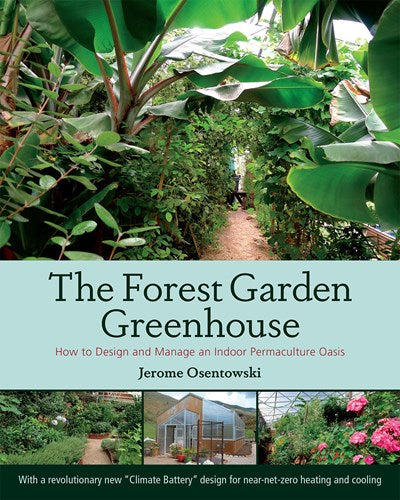Now with a revolutionary new “Climate Battery” design for near-net-zero heating and cooling
"Jerome Osentowski is a master of simple, elegantly frugal, eminently practical indoor gardens."—Amory Lovins
In this groundbreaking book, Jerome Osentowski, one of North America’s most accomplished permaculture designers, presents a wholly new approach to a very old horticultural subject. In The Forest Garden Greenhouse, he shows how bringing the forest garden indoors is not only possible, but doable on unlikely terrain and in cold climates, using near-net-zero technology. Different from other books on greenhouse design and management, this book advocates for an indoor agriculture using permaculture design concepts—integration, multi-functions, perennials, and polycultures—that take season extension into new and important territory.
Chapters Include:
Expanding the Possible with Season Extension
The History and Mechanics of the Climate Battery
Considerations for Building Your Own Greenhouse
Several Off-site Case Studies
Osentowski, director and founder of Central Rocky Mountain Permaculture Institute (CRMPI) incorporates deep, holistic permaculture design with practical common sense. His greenhouse designs, which can range from the backyard homesteader to commercial greenhouses, are completely ecological and use a simple design that traps hot and cold air and regulates it for best possible use.
With detailed design drawings, photos, and profiles of successful greenhouse projects on all scales, this inspirational manual will considerably change the conversation about greenhouse design.

